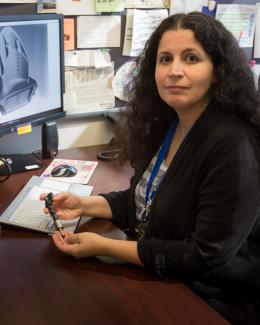Abstract
Hydrogen is an element of fundamental importance for energy but hard to quantify in bulk materials. Neutron radiography was used to map in situ loss of elemental hydrogen from beech tree wood samples during pyrolysis. The samples consisted of three wood cylinders (finished dowel or cut branch) of approximately 1 cm in length. The samples were pyrolyzed under vacuum in a furnace vessel that was placed inside a cold neutron imaging beamline using a temperature ramp of 5 °C/min from ambient up to 400 °C. Neutron radiographs with exposures of 30 s were sequentially recorded with a charge-coupled device over the course of the experiment. Relative absorbance/scattering of the neutron beam by each sample was based on intensity (or brightness) values as a function of pixel position. The much larger neutron cross section for hydrogen compared to carbon and oxygen enables almost direct conversion of neutron attenuation into sample hydrogen content for each time step during the pyrolysis experiment. Target and vessel temperatures were recorded concurrently with collection of the radiographs so that changes could be directly correlated to different states of pyrolysis. The most visible change appeared at the initial phase of the 400 °C plateau as evidenced by strong hydrogen loss and primarily diametric shrinking of the samples. The loss of elemental hydrogen between initial and final states of pyrolysis was estimated to be about 70%.







